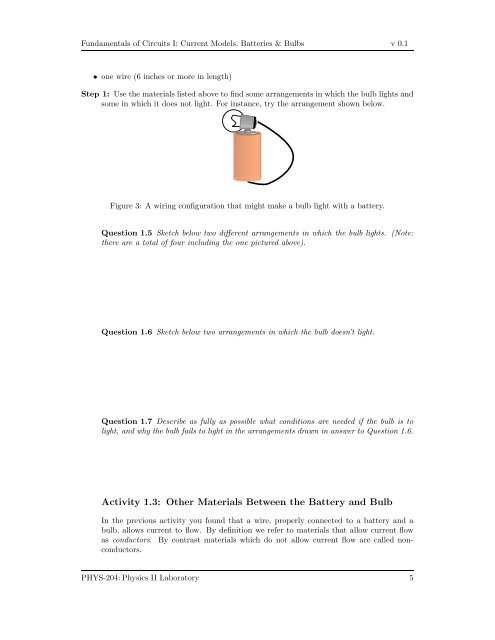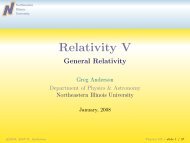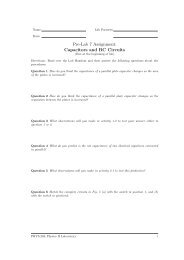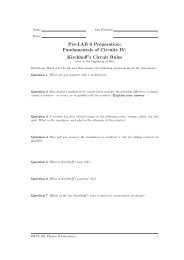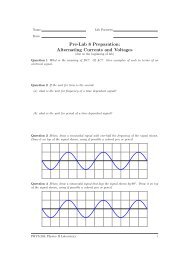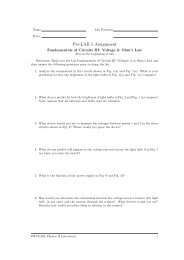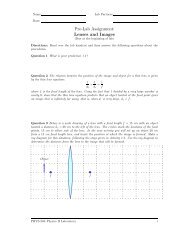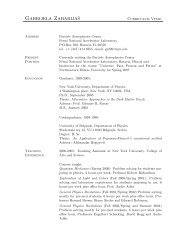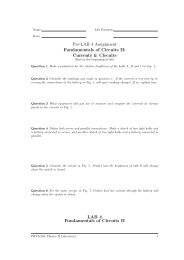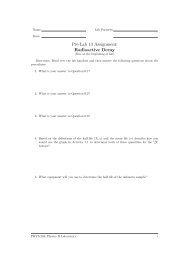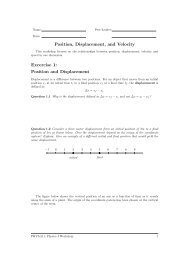Fundamentals of Circuits I: Current Models, Batteries & Bulbs
Fundamentals of Circuits I: Current Models, Batteries & Bulbs
Fundamentals of Circuits I: Current Models, Batteries & Bulbs
You also want an ePaper? Increase the reach of your titles
YUMPU automatically turns print PDFs into web optimized ePapers that Google loves.
<strong>Fundamentals</strong> <strong>of</strong> <strong>Circuits</strong> I: <strong>Current</strong> <strong>Models</strong>, <strong>Batteries</strong> & <strong>Bulbs</strong> v 0.1<br />
• one wire (6 inches or more in length)<br />
Step 1: Use the materials listed above to find some arrangements in which the bulb lights and<br />
some in which it does not light. For instance, try the arrangement shown below.<br />
Figure 3: A wiring configuration that might make a bulb light with a battery.<br />
Question 1.5 Sketch below two different arrangements in which the bulb lights. (Note:<br />
there are a total <strong>of</strong> four including the one pictured above).<br />
Question 1.6 Sketch below two arrangements in which the bulb doesn’t light.<br />
Question 1.7 Describe as fully as possible what conditions are needed if the bulb is to<br />
light, and why the bulb fails to light in the arrangements drawn in answer to Question 1.6.<br />
Activity 1.3: Other Materials Between the Battery and Bulb<br />
In the previous activity you found that a wire, properly connected to a battery and a<br />
bulb, allows current to flow. By definition we refer to materials that allow current flow<br />
as conductors. By contrast materials which do not allow current flow are called nonconductors.<br />
PHYS-204: Physics II Laboratory 5


